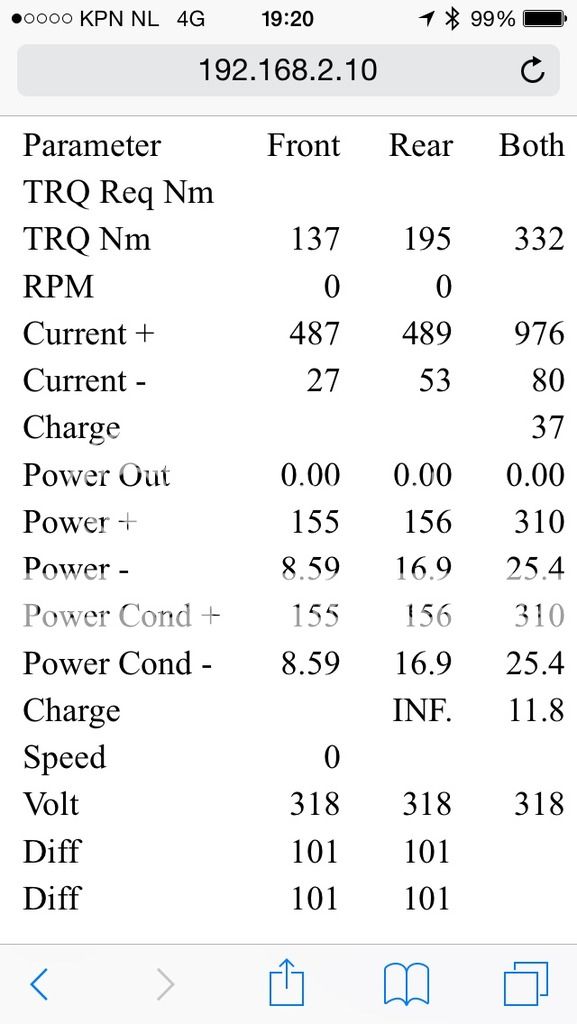Hi Ian,
Believe me, I know virtually nothing of E-motors and I knew absolutely nothing about the before I started thinking about the PHEV. Well, almost ;-) But to me,
ian4x4 said:
If, as you say, you are measuring pulses, and not mean battery current output, then the voltage is changing at the motor coils so power is proportional to the square of the mean current.
could be latin as well :lol:
In essence, I am trying to do a couple of different things:
- Verify / make visible that in parallel mode, the rear E-motor indeed produces some torque (as Mitsu claims) where the front E-motor only consumes a little bit of power to prevent E-drag.
- Make visible that when coasting in B0, some power will still go to the E-motors. As a matter of fact, some battery power will even go to the generator to prevent drag when you are in parallel mode (only in B0?) and lift the throttle / briefly hit the breaks. Even though the power meter shows 0. Similar, while towing with a slight head wind, the energy flow diagram might show the orange error from engine to wheels but no blue arrow. One would expect that this situation was neutral to the SOC. But it is not. SOC is dropping at that time, because battery power is used to prevent drag in both the E-moters and the generator.
- Make visible what happens when you switch from normal to 4WD lock mode, in (serial) EV and in parallel mode.
- Understand what happens when the car decides to start then engine at very low speeds, even when SOC seems sufficient.
- Etc.
Why? Just because we can. That is, if we indeed can. And I think I am on the right track.
So, I am doing different experiments with different objectives, not necessarily related. And I show 'results' of them in this one thread. But I do realise measurements at 0 RPM say nothing about efficiency at higher speeds

Indeed I do not know what I am measuring. But neither did I have any clue when I first saw the hex strings coming out of my OBDII dongle. I managed to crack them by looking at lots of samples and comparing them with readings from 'official' devices. And that brought quite a lot of successes. The same way, I was hoping to test different formulas for calculating E-power consumption and compare the results to battery output, to see if one of these formulas would give me a solid match. Should I find a match (over different tests and speeds) it would allow me to compare E-power in to mech power out and determine efficiency at different RPM's. Again, why? Because we can?





